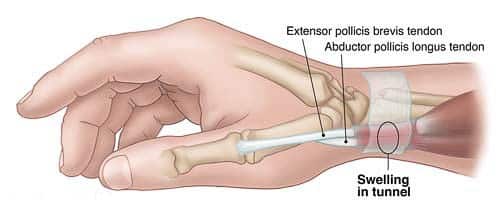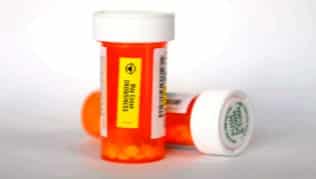Are you suffering from symptoms of De Quervain's Tenosynovitis?
The Omaha Hand & Wrist Specialists at MD West ONE can properly diagnose and treat De Quervain's tenosynovitis through surgical and nonsurgical treatments. If you have the following symptoms, you may want to make an appointment with one of our Board Certified Specialists.
- Pain in the radial side of the wrist at the base of the thumb
- Movements that involve pinching or twisting of the wrist will lead to increased discomfort
- Swelling in the area that hurts
- Pain will sometimes radiate into the forearm

Meet MD West ONE's hand specialists and learn more about how they treat De Quervain's Tenosynovitis.
De Quervain's Tenosynovitis, Treatment(s), Surgical Alternative(s), Surgery
What is De Quervain's tenosynovitis?
De Quervain's tenosynovitis is a painful inflammation of the tendons in your wrist at the base of your thumb. There are several channels or compartments on the back of your wrist and thumb that contain tendons. In the first compartment, two tendons help move your thumb. In this condition, the tendons in this area can swell, or the channel can narrow, which then squeezes the tendons and leads to inflammation and pain.
The cause of this disorder is not always clear. There are several possible contributing factors. Hobbies, particularly those that involve repetitive grasping or pinching, may play a role. Patients with inflammatory disorders like Rheumatoid Arthritis are at an increased risk. Trauma, such as a direct blow to the wrist area, can cause swelling and precipitate the problem. This condition is also common in mothers of newborns and usually develops a few weeks after delivery.
Are there any non-surgical treatments?
For the hand physicians at MD West ONE, the treatment includes the utilization of multiple modalities.
Conservative care measures may include oral medications such as ibuprofen, naproxen, meloxicam, a thumb-spica splint, local ice application, modified activity that may include avoidance of repetitive motions, physical therapy, or a cortisone injection.

What if the non-surgical options do not work for me?
If conservative treatment(s) fail, surgical intervention may be recommended.
Surgery is usually done in an outpatient setting, often with local anesthetic and light sedation. Next, a small incision is made in the wrist, and the soft tissue or sheath that is binding the tendons is released-- this will allow the tendons to glide more smoothly.
After surgery, your provider may suggest you apply ice to the surgical site, elevate your wrist, and limit activity. Over-the-counter medications like Ibuprofen and Tylenol can usually control pain.
At your first post-operative appointment, a light exercise program will be initiated with an emphasis on range of motion. You will be allowed to gradually resume regular activities in the first few weeks after surgery. There may be some residual inflammation and tenderness that persists for several weeks but should gradually decline. Occasionally, physical therapy may be utilized to aid in your recovery.
Don't wait any longer to get relief. Make an appointment to see one of our specialists.
AMERICAN SOCIETY FOR SURGERY OF THE HAND
All of the hand surgeons in the practice are recognized members of the American Society for Surgery of the Hand. It is the oldest and most prestigious medical society dedicated to the hand and upper extremity. The mission of the society is to advance science and practice of hand and upper extremity surgery through education, research, and advocacy on behalf of patients and practitioners. These physicians dedicate their time and energy to improving the patient experience and their knowledge in their field. For more information, visit the American Society for Surgery of the Hand website.




